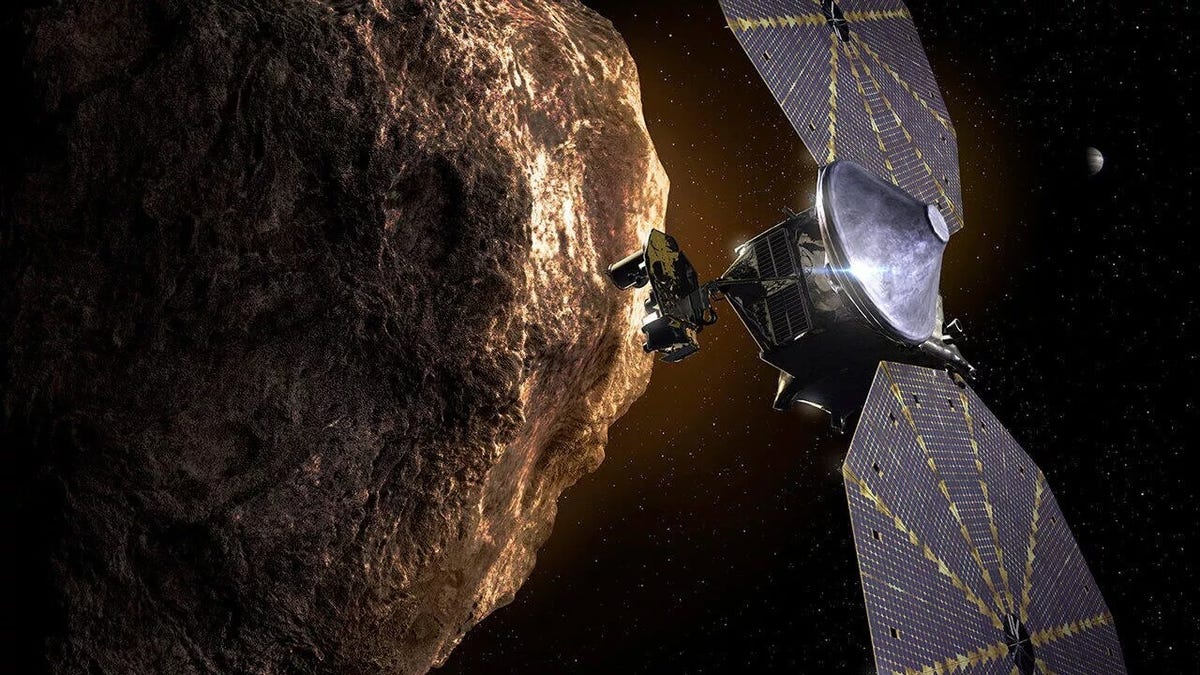NASA's Lucy Mission Team Spots a Surprise Tiny Moon Around a Trojan Asteroid
The spacecraft is still en route to the asteroid belt, but the scientists on the mission are already making discoveries.

An illustration of Lucy and an asteroid.
Teams working with one of NASA's newest spacecraft have made an unexpected discovery years before it's set to reach its ultimate destination: The smallest of the asteroids the probe plans to visit is orbited by an even smaller moon.
The Lucy mission left Earth in October bound for the orbit of Jupiter and a group of asteroids known as the Trojans that tend to follow the giant planet around. The spacecraft's first encounter with an asteroid won't happen until 2025 as Lucy flies through the main asteroid belt. But in preparation the mission team is working with groups of veteran and amateur astronomers on Earth to get some early measurements of asteroids included on Lucy's grand tour.
On March 27 of this year, 26 such teams spread out across a designated area to observe one of Lucy's target space rocks called Polymele as the asteroid passed in front of a distant star behind it. Capturing the asteroid from different vantage points on Earth as it briefly blocks, or occults, the star, making it appear to blink off and on again provides scientists with data that helps to precisely measure the location, size and shape of Polymele.
Lucy scientists have helped to coordinate similar occultation campaigns in the past, but this one revealed a surprise.
"We were thrilled that 14 teams reported observing the star blink out as it passed behind the asteroid, but as we analyzed the data, we saw that two of the observations were not like the others," Marc Buie, from the Lucy team at the Southwest Research Institute, said in a statement Tuesday. "Those two observers detected an object around 200 km (about 124 miles) away from Polymele. It had to be a satellite."
The Lucy team used the occultation data to determine that this mini-moon is about 3 miles (5 kilometers) across, compared to Polymele, which has a 17-mile (27-kilometer) diameter at its widest point.
Remarkably, finding that one of the asteroids on its itinerary has a satellite has happened to the Lucy team before.
In January 2021, images from the Hubble Space Telescope revealed that the Trojan asteroid Eurybates is circled by a smaller satellite.
So basically Lucy will become acquainted with more tiny worlds than originally planned.
"Lucy's tagline started out: 12 years, seven asteroids, one spacecraft," said Lucy program scientist Tom Statler from NASA headquarters in Washington. "We keep having to change the tagline for this mission, but that's a good problem to have."

